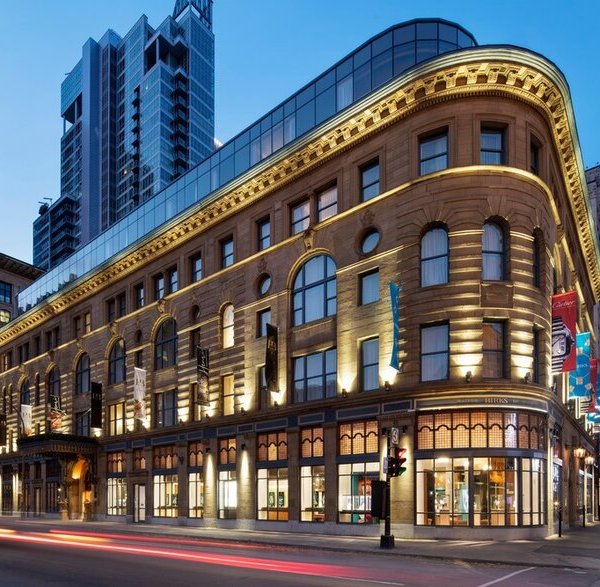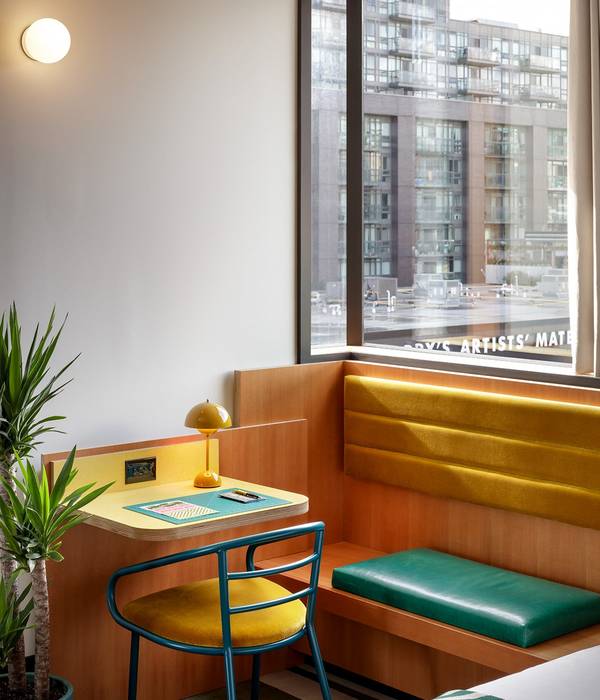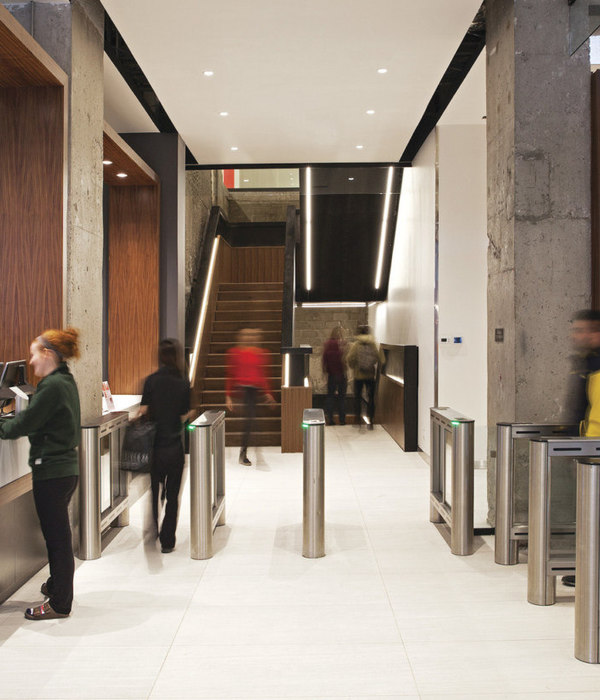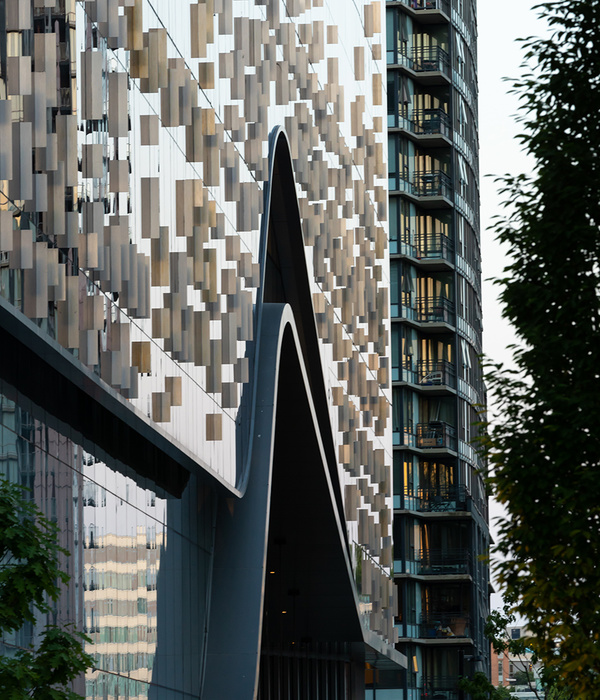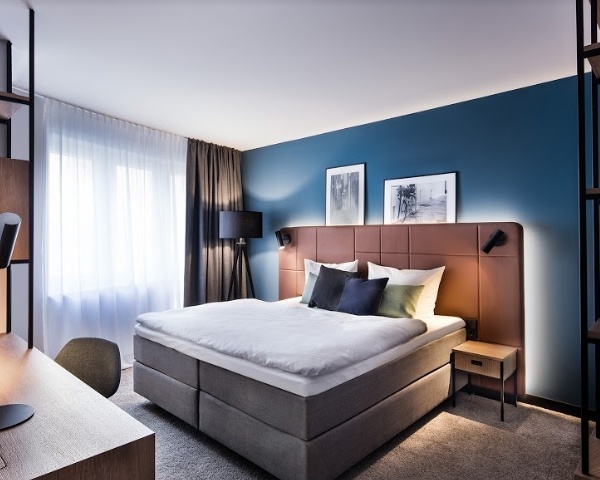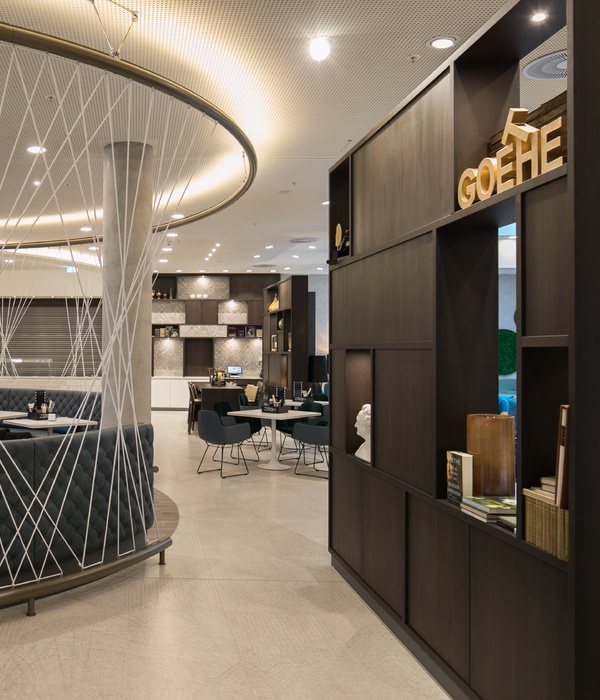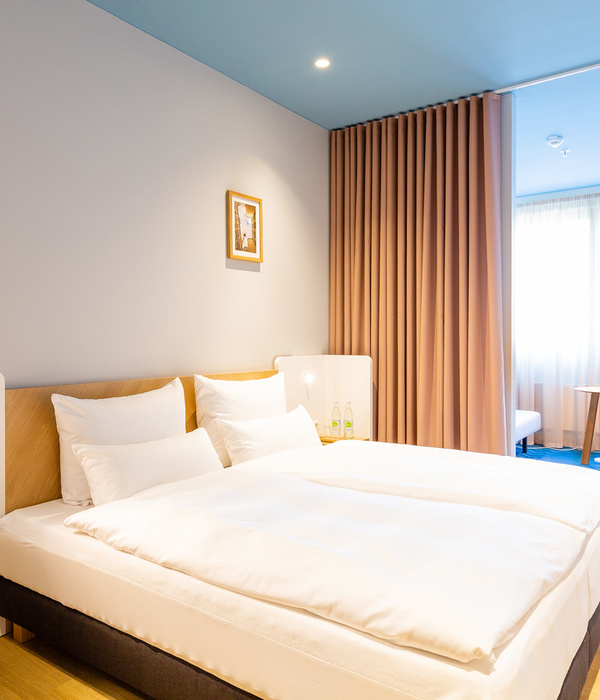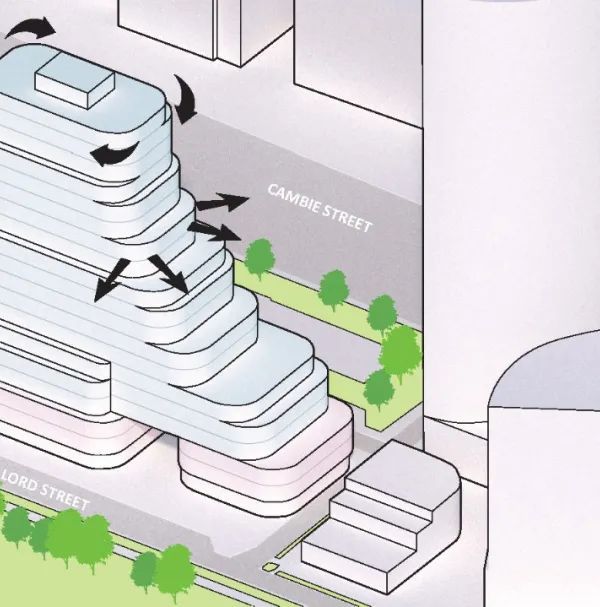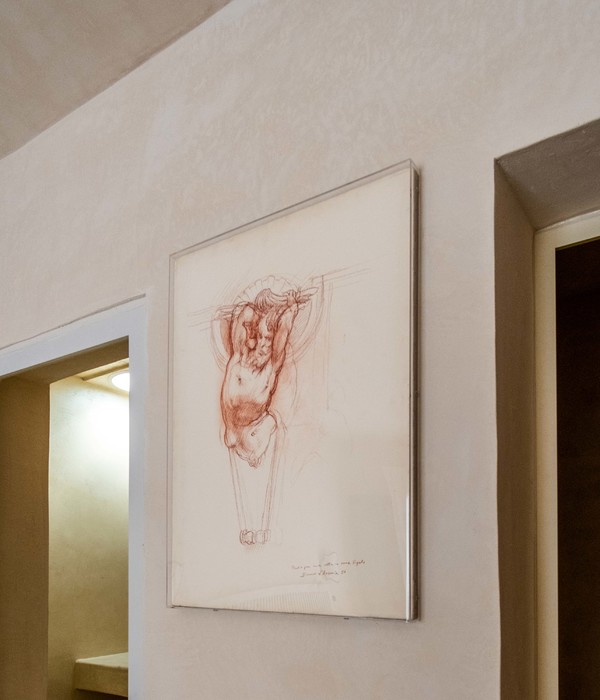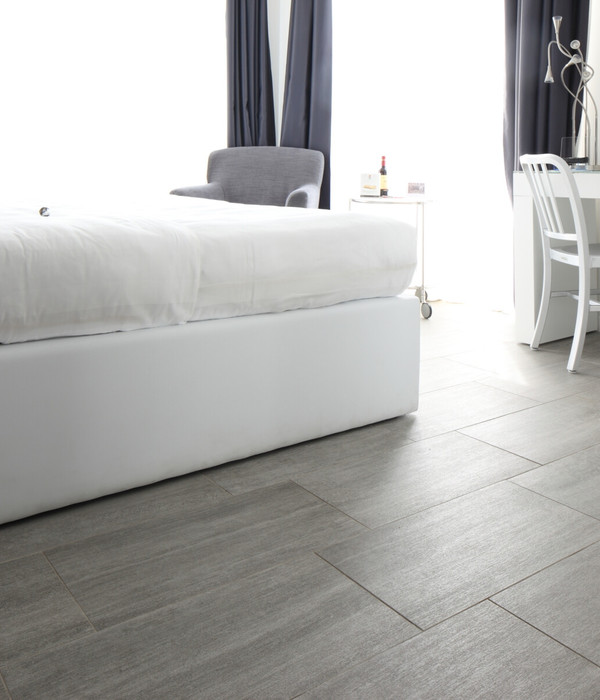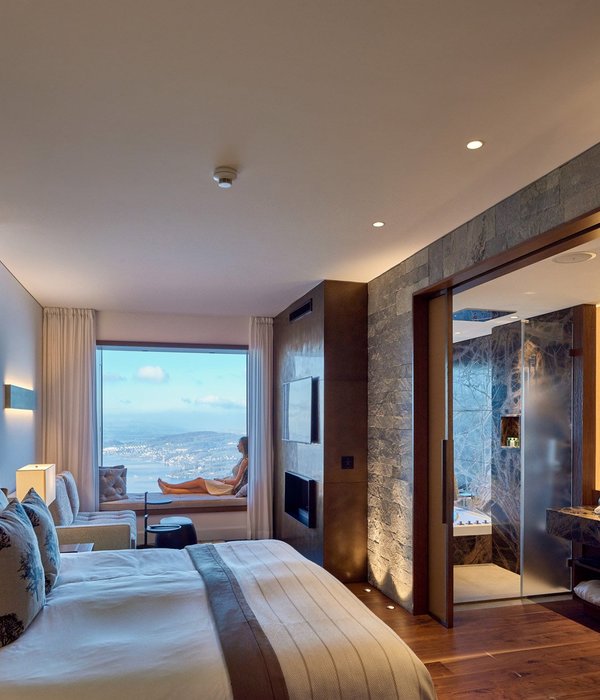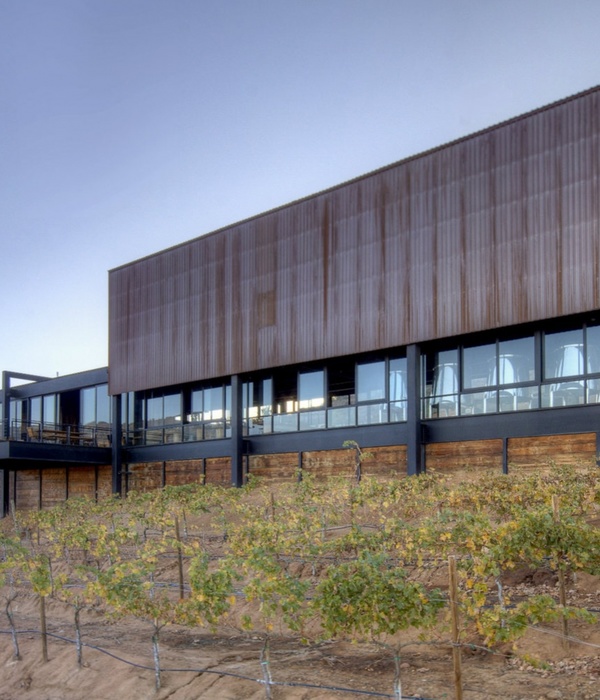德立莊博愛館位於地理位置明顯的三角地,在思考設計時,設計師希望凸顯該品牌的高等級定位,因此我們定義了東方輕奢華的概念去詮釋博愛館的主軸。
建築外觀的處理上,在原始的立面結構上,設計師重新分割了立面,由於既有建築的窗戶系統是採用反樑上方開窗而產生水平向的開窗語彙,因此透過窗框鋁板的分割,重新讓立面產生垂直的元素,再以律動錯位的手法,重新整合窗戶、石材、燈具的分割。
入口騎樓的天花及大門仍延續錯位的設計手法讓元素統一,在室內石材的選擇為了展現東方的美感,設計師採用了黑色紋理的潑墨石材呈現東方山水的概念,同時在石材的上方亦採用鏡面去達成更為直接的視覺呈現,而接待櫃檯的造型是來自寶瓶的形象造型延伸。
一樓餐廳上午除了供應客房早餐使用外,營業時間則為獨立餐飲空間,因此還設計了獨立出口,使機能動線明確,餐廳外入口的水景也是做為室內空間的中介轉換,餐廳中簍空的鐵件使光線隱約透出,讓壁面產生了層次及光影變化。
在客房的設計中,在精簡的空間面積,設計師重新分配了衛浴空間的使用機能,企圖從傳統一間廁所中包含淋浴、馬桶間及洗臉台的方式,將各個機能獨立使用,讓使用機能更為靈活。
The Midtown Richardson-Kaohsiung, located at the street corner, represents its style as the high-grade hotel with the concept of oriental moderate luxury. For the original architectural structure of upstand beam above which the windows are furnished, the designer uses the aluminum window frames that create the vertical structural scale, which furthermore reestablishes the layout of the windows, stones and lamps. The ceiling and door at the veranda consistently apply the design skill of relocation, of which the stones textures diffuse the oriental charms. The black wavy veins on the stones artistically manifest the eastern ink painting atmosphere. The mirrors, on the stones, comprehensively extend the visuals, and the design idea of reception counter derives from the bottle shapes. Except for serving the breakfast, the restaurant in other business hours changes into an independent dining area with the exclusive exit. The water feature, outside the restaurant, has become the intermediate transition between the outdoor and the indoor space. The lights passing through the ironworks ornamented in the restaurant spawn the visual variations on the wall surfaces. Different from the conventional bathrooms integrating the shower, toilet and basin, the bathrooms in the hotel ingeniously isolate these functions without taking up extra spaces, the design idea giving a wonderful experience for everyone staying in the Midtown.
{{item.text_origin}}

